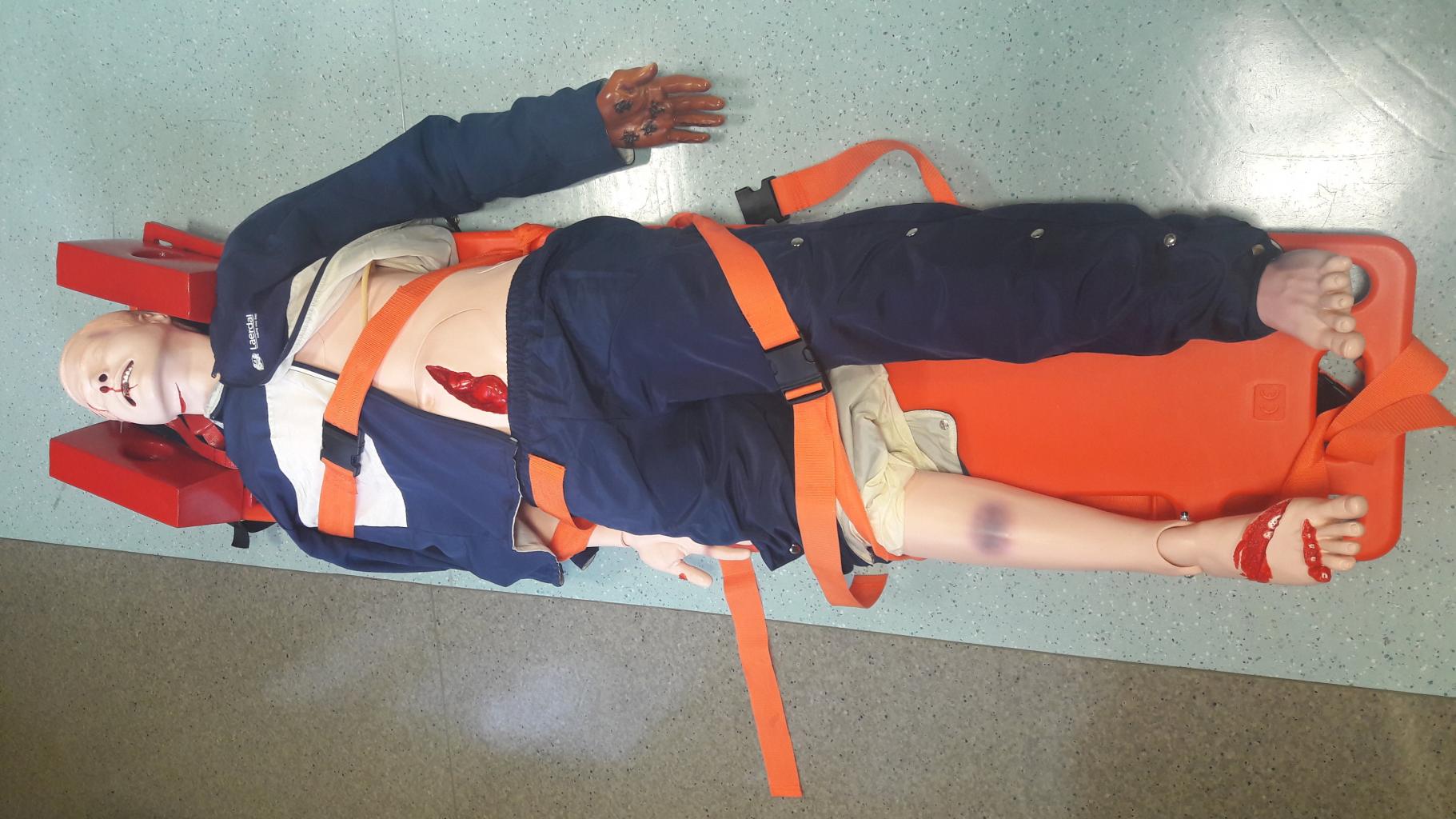METC training equipment
Clinical skills are taught at The Medical Education Technology Centre of Rīga Stradiņš University using a variety of dummies and simulation devices. Multiple options are offered – ranging from simple medical manipulations to complicated surgical simulations that develop the skills and abilities of future physicians, thus improving patients’ medical care. The teaching equipment provides high-quality and effective acquisition of skills for future healthcare personnel – physicians of different specialties, rehabilitologists, and nurses.
Simulators
- HPS (Human Patient Simulator)
The only simulator equipped gas (oxygen and CO2) exchange, therefore it can breathe and react to anaesthetic gas.
The simulator includes 50 scenarios of clinical situations related to respiratory and cardiovascular diseases, and artificial lung ventilation. During the scenarios, the simulator automatically responds both to the medicines administered and to the actions performed, therefore the learning process is as close as possible to the clinical environment, which enables students to acquire the skills they need.
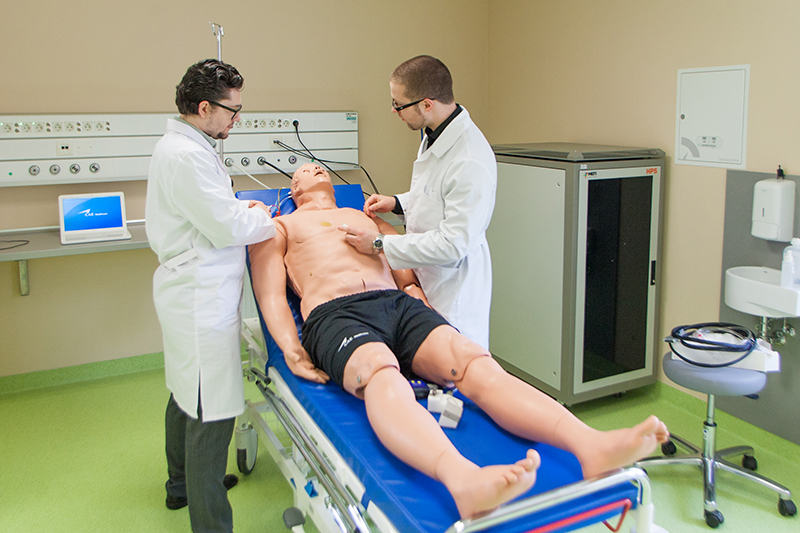
- SimMan 3G
SimMan 3G is aimed for training in emergency medicine and injury-related situations (in case of extremity amputations, arterial and venous bleeding).
It gives the opportunity to perform cardiopulmonary resuscitation by direct artificial heart massage and using a defibrillator, assisted respiration, and intubation. The simulator can imitate both neurological and physiological symptoms, such as eye reactions to light, seizures, excretion, etc. During simulations, the simulator automatically responds to drugs administered both intravenously and intraossally.
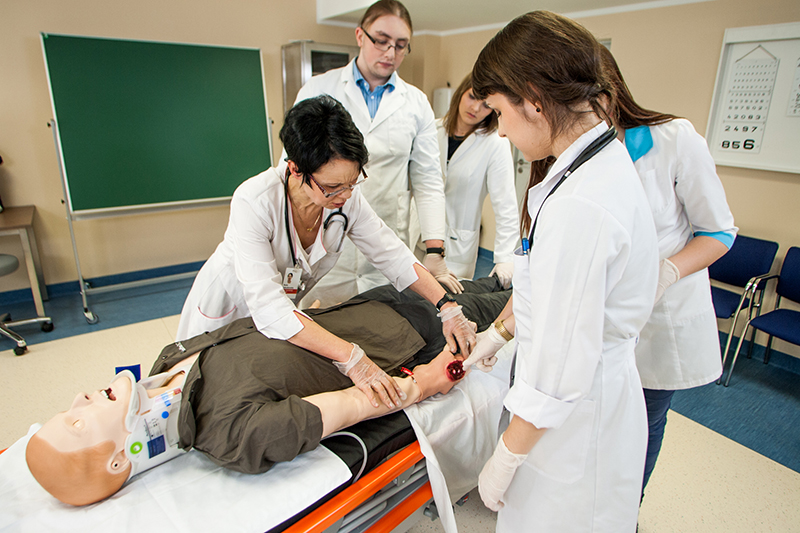
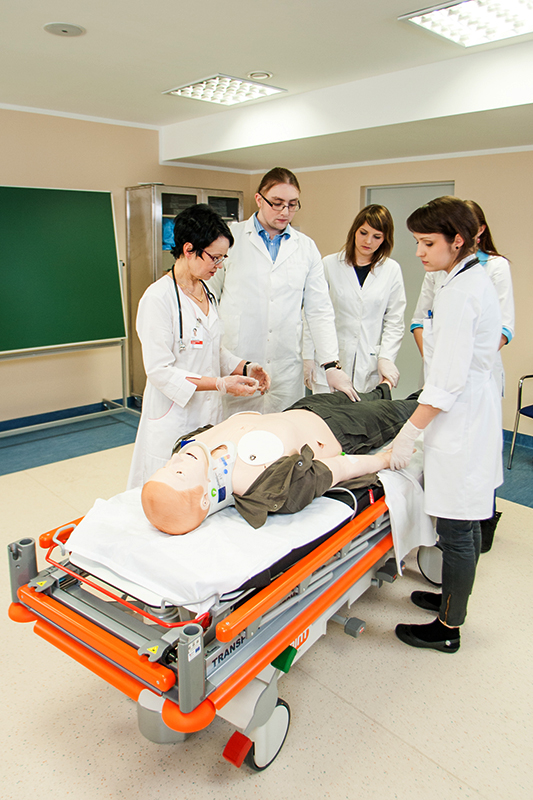
- SimMom
SimMom is an upgraded full-body simulator with precise anatomy, providing skills for normal and abnormal delivery, and in case of postpartum complications.
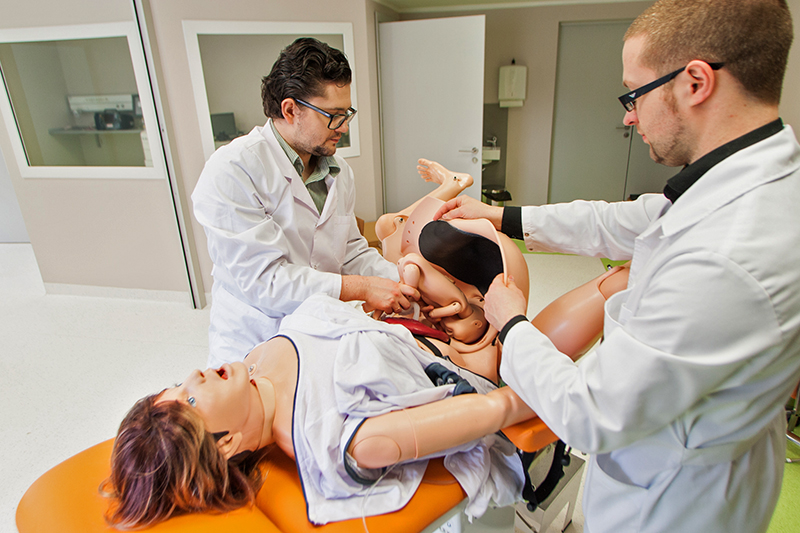
- SimNew B
SimNewB simulator is mostly intended for learning the skills of emergency medical assistance and resuscitation of newborns. It gives the opportunity to perform cardiopulmonary resuscitation by direct artificial heart massage and using a defibrillator, respiration, and intubation, and intravenous and intraossal drug administration.
The simulator visually displays the real anatomical features of the newborn. It is suitable for the acquiring of clinical skills in the case of various diseases and clinical situations. During simulations, a clinical simulation specialist or teacher ensures a simulator response to the actions performed.
- SimJunior
SimJunior is an interactive paediatric simulator. It is a 6-year-old boy simulating both a healthy, talking child and various critical situations that allow students to gain practical experience in paediatrics.
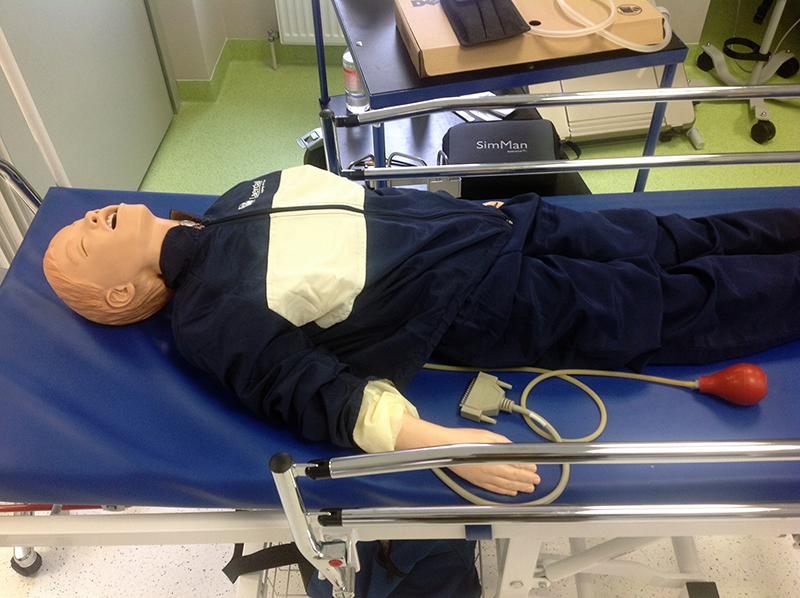
- Resusci Anne QCPR
Resusci Anne is a cardiopulmonary resuscitation simulator accurately replicating the human anatomy, making it possible to detect chest resistance, to see chest movements during assisted respiration; it also requires the student to properly position the head and chin to ensure the airways are open.
Assisted respiration can be performed using different types of Ambu bags and the mouth-to-mouth method. The simulator can be connected to a computer or SimPad tablet to ensure the monitoring of cardiopulmonary resuscitation skills, determining and controlling the correct depth and speed of chest compression, and other parameters of assisted respiration.
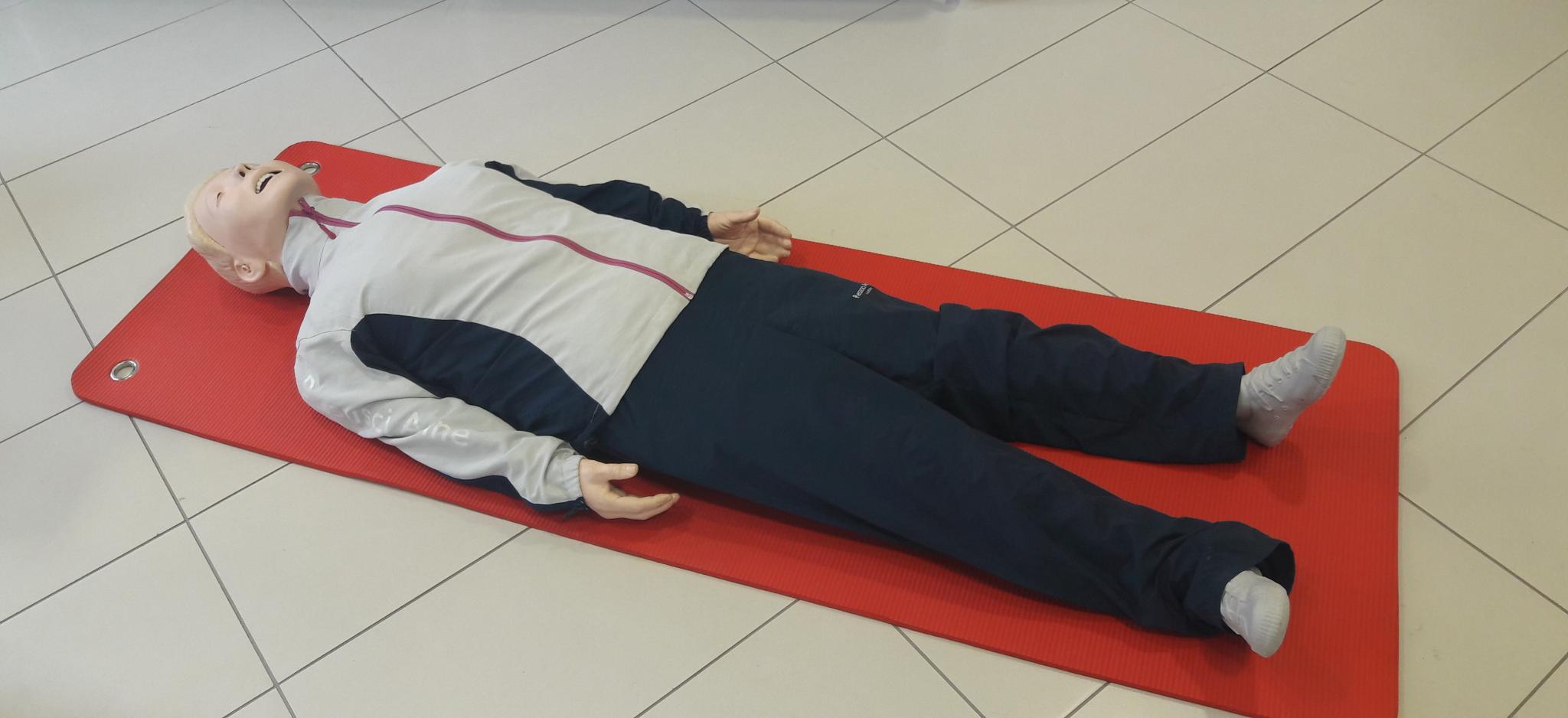
Virtual reality simulators
- GI mentor
- Endoscopic simulator for training of gastrointestinal tract examination procedures in the preclinical stage.
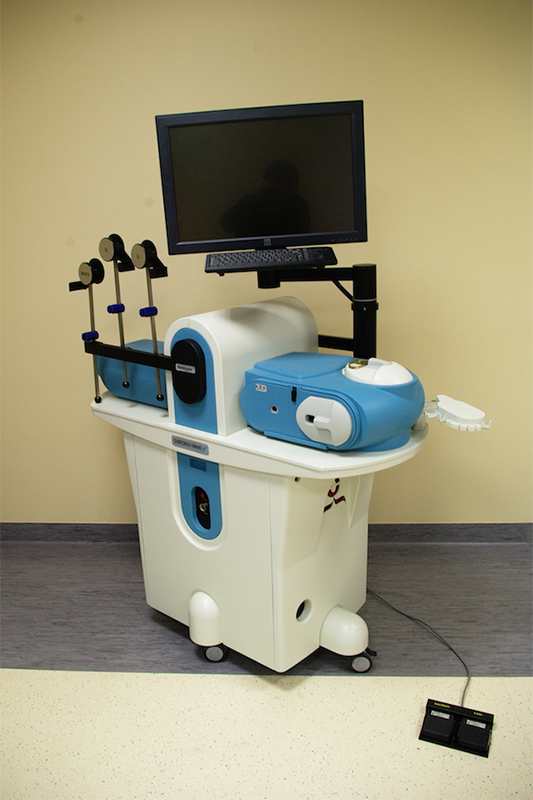
- UltraSim
Ultrasound training simulator. The simulator is intended for ultrasound training:
- emergency medicine (38 clinical cases)
- neck (16 clinical cases)
- blood vessels (30 clinical cases)
- abdominal cavity (101 clinical cases)
- gynaecology (30 clinical cases)
- chest (30 clinical cases)
- obstetrics (29 clinical cases)
- transvaginal (60 clinical cases)
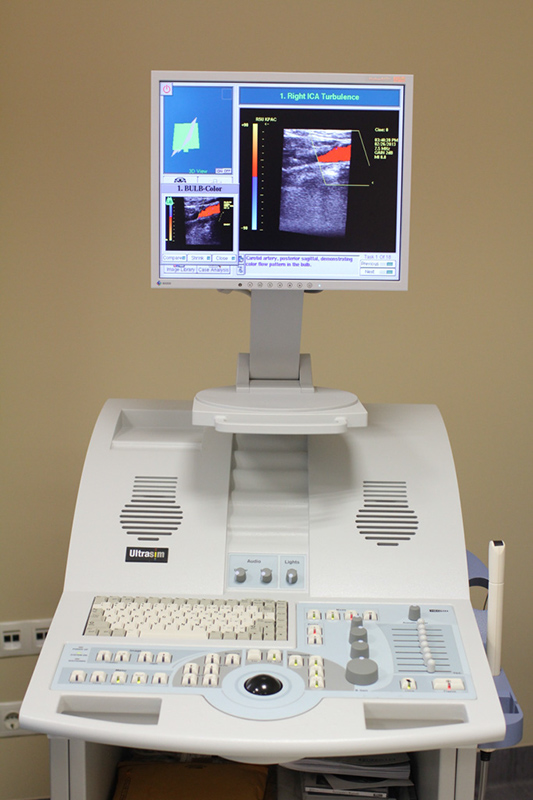
- LapSim
Laparoscopic surgery simulator aimed at learning manipulations of different complexity:
- basic skills module
- cholecystectomy
- appendectomy
- gynaecological procedures
- hysterectomy
- bariatric surgery
- nephrectomy
- video-assisted thoracoscopic lobectomy (VTS)
- suturing & intestinal anastomoses
- UroMentor
UroMentor simulator ensures practical training for a wide range of urological procedures, diagnostic principles for norm and pathologies.
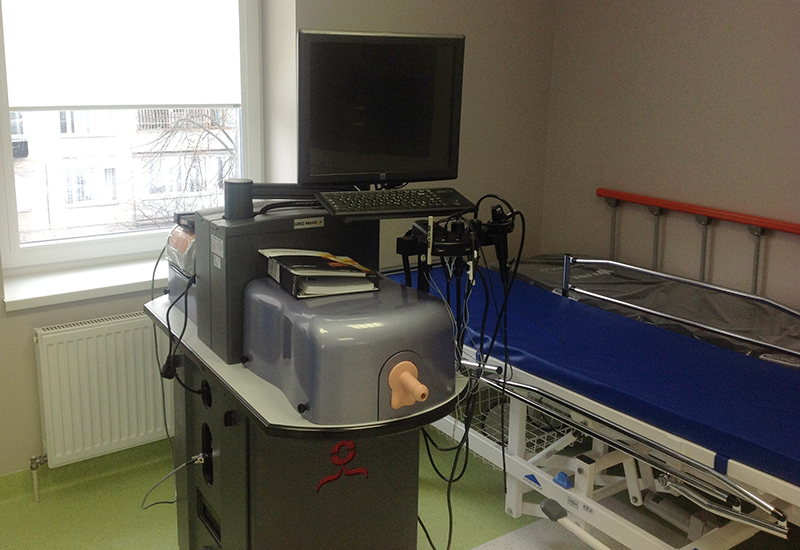
- Auscultation simulator
Auscultation simulator for diagnostics of norm and pathologies of the cardiovascular system and diagnostics of norms and pathologies of the respiratory system. The simulator demonstrates a patient with heart disease and arrhythmias – 88 clinical cases, and respiratory disorders – 35 clinical cases.
- Dissection table
Sectra Table is a touch-sensitive interactive screen that enables to study three-dimensional human anatomy. Easy access to all medical images, including 3D visual images; gives an opportunity to analyse anatomy and to study various clinical cases. Possibility to convert two-dimensional CT and MR images into 3D reconstructions.
- Arthroscopy simulator
For training in knee arthroscopy. The simulator is intended for manipulations of different complexity:
2 didactic modules
10 basic skills modules
14 diagnostic modules
11 surgical cases
- CathLabVR
CathLabVR provides training in angiography – treatment and diagnostics of cardiovascular disorders. Diagnostic coronary angiography, balloon angioplasty, coronary stent placement can be performed. Manipulations in carotid arteries.
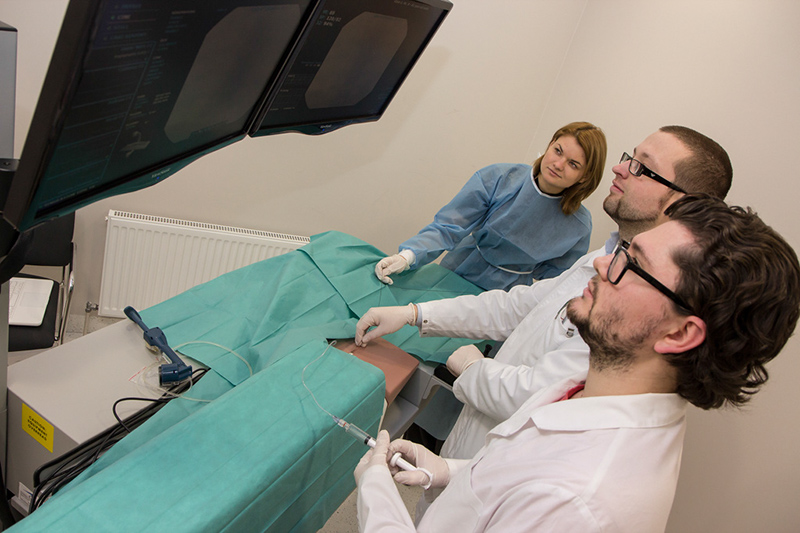
- BoxTrainer
Laparoscopic simulator is a unique device for acquiring laparoscopic skills in surgery.
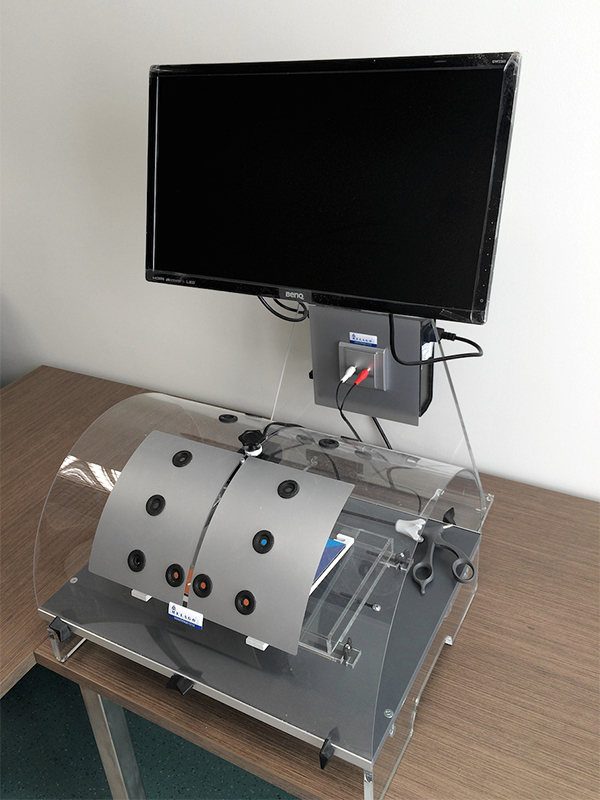
- Echocardiography simulator
- Provides the skills required to perform heart imaging using a modern ultrasound technique.
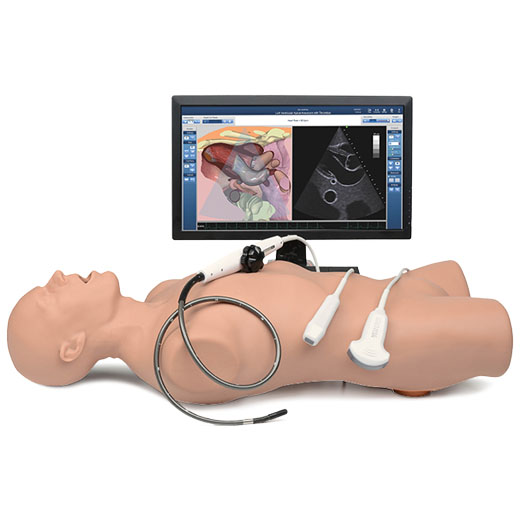
Training systems
- Intravenous injection training system
The intravenous injection training system is intended for training to perform venous puncture, i/v catheter insertion, i/v infusion, and blood sampling skills. The training system consists of a closed circulatory system with an easily maintained necessary pressure, which ensures realistic blood flow.
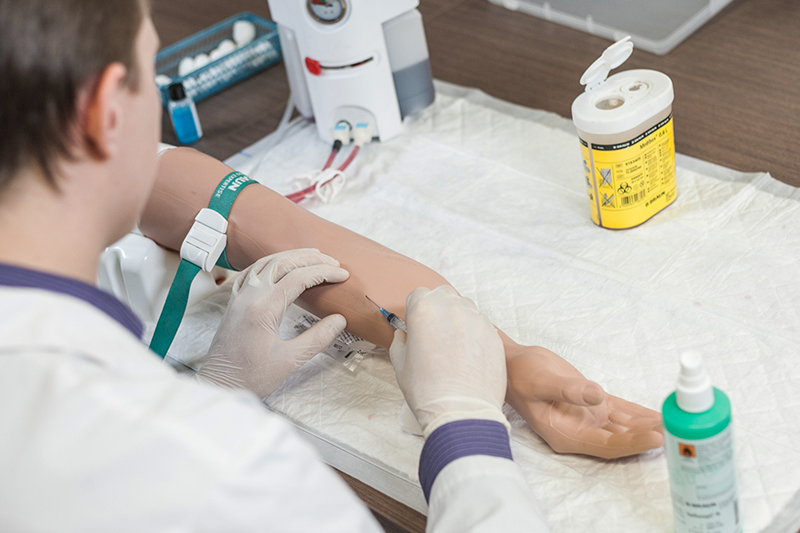
- Injection training system
- The injection training system is aimed at acquiring intracutaneous, subcutaneous, and intramuscular injection techniques. It consists of several layers, representing the epidermis, derma, adipose and muscular layer.
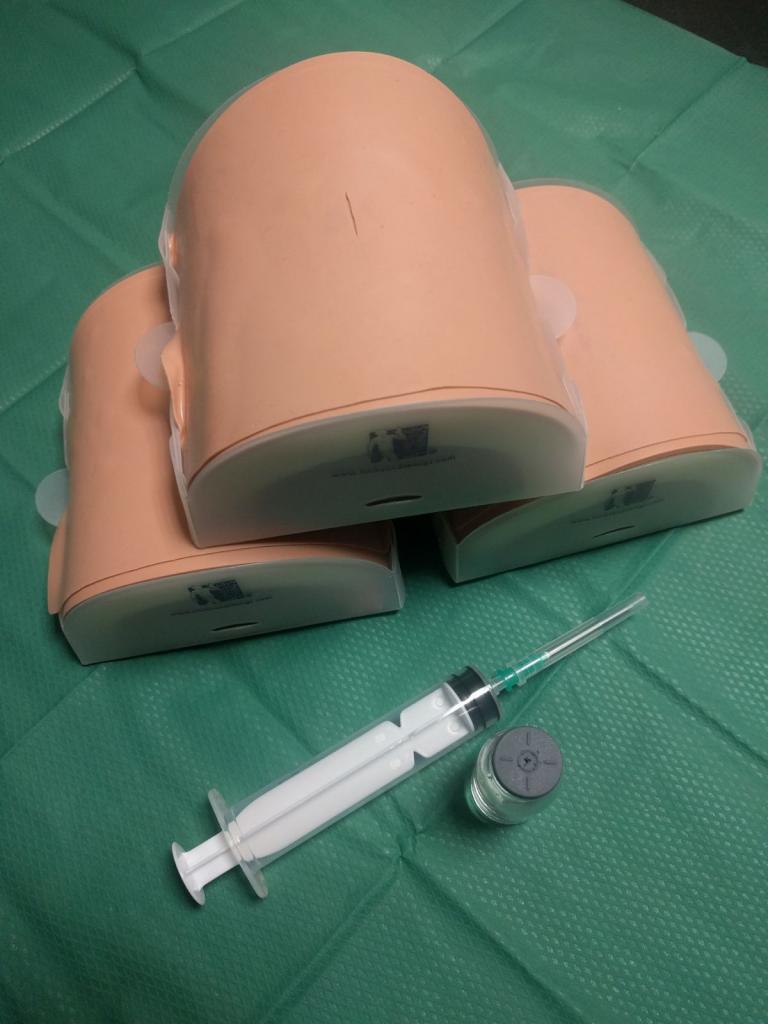
- Training system for surgical manipulations: knots; suturing
Training system for surgical manipulations is designed for the acquisition of various knot and suturing skills which enable to learn basic surgical skills.
Knots: manual and using instruments, friction knots, knots in simulated wound surgery
Suturing technique: correct holding and usage of a needle, interrupted and simple sutures, continuous sutures, subcutaneous sutures
Skin lesions: skin lesion removal, subcutaneous fatty cyst removal
Haemostasis techniques
Intestinal end-to-end interrupted sutures
Tendon sutures
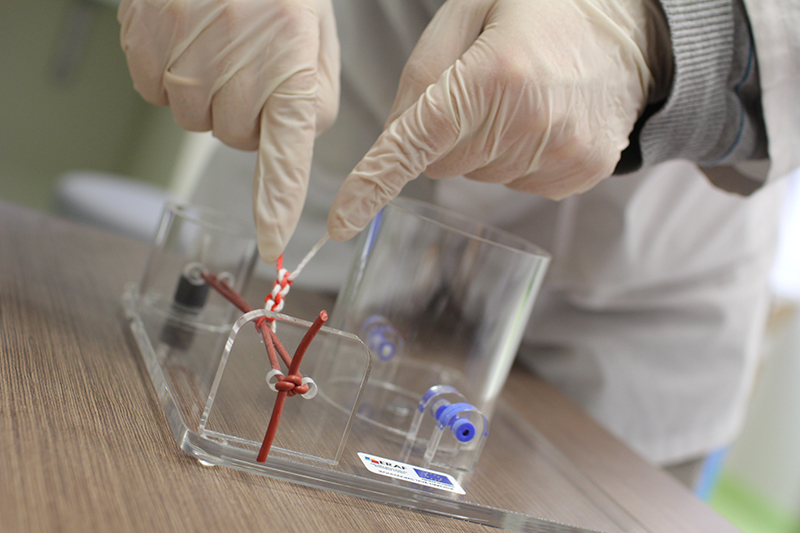
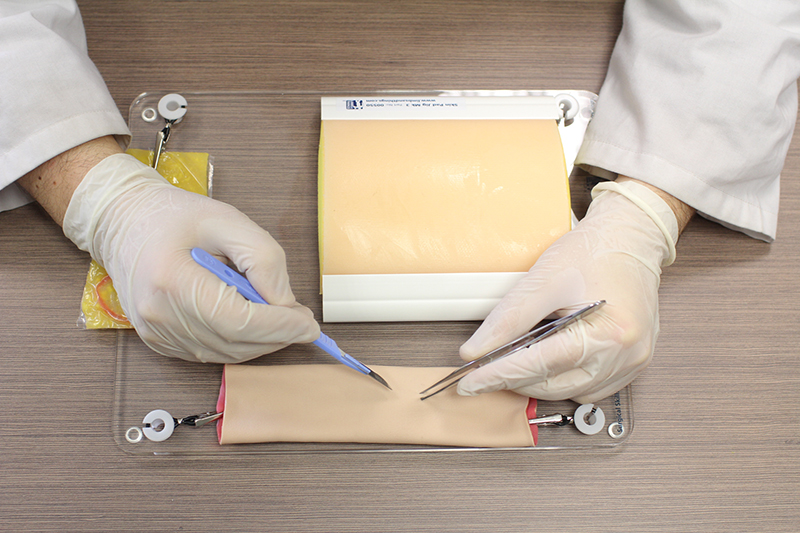
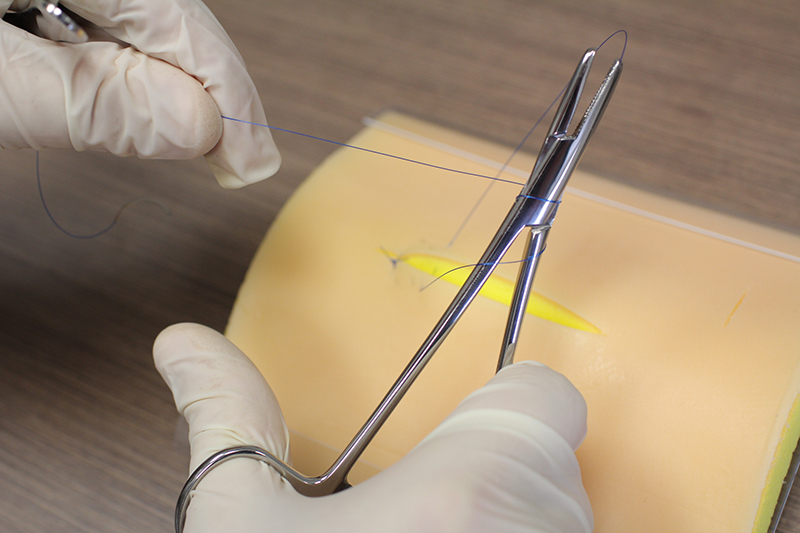
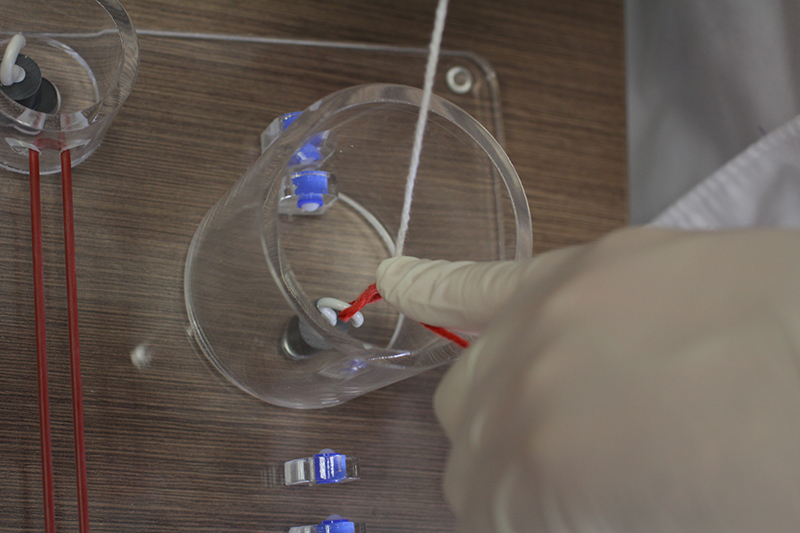
- Training system for urinary bladder catheterisation
The training system for urinary bladder catheterisation represents the exact anatomy of female and male genitals and ensures the opportunity to master aseptic urinary bladder catheterisation skills, using both an intermittent catheter and a longitudinal catheter (Foley catheter). The catheter moving from the urethra to the urinary bladder can be felt during catheter insertion.
- Episiotomy training system
- The episiotomy training system is intended for mastering episiotomy, perineal suturing technique and procedures. The following skills are acquired during the use of the training system:
- identification of fontanelles
- treatment of stretched perineum
- reducing the risk for newborn and maternal injuries
- infiltration anaesthetics of the perineum
- performing mediolateral or medial episiotomy
- use of instruments
- suturing technique and suturing of the perineum and in the vagina
- deep muscle suturing
- subcutaneous sutures
- identification and surgical correction of perineal tear
- digital rectal examination before and after perineal tear correction
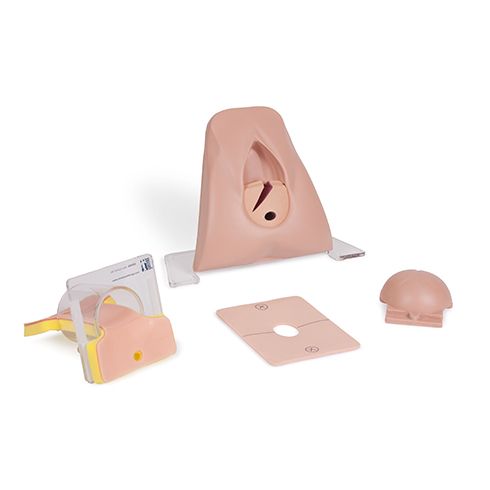
- Training system for Leopold's maneuver
Training system for Leopold's maneuver enables to change the unborn child’s position and imitate specific pregnancy term up to 9th month.
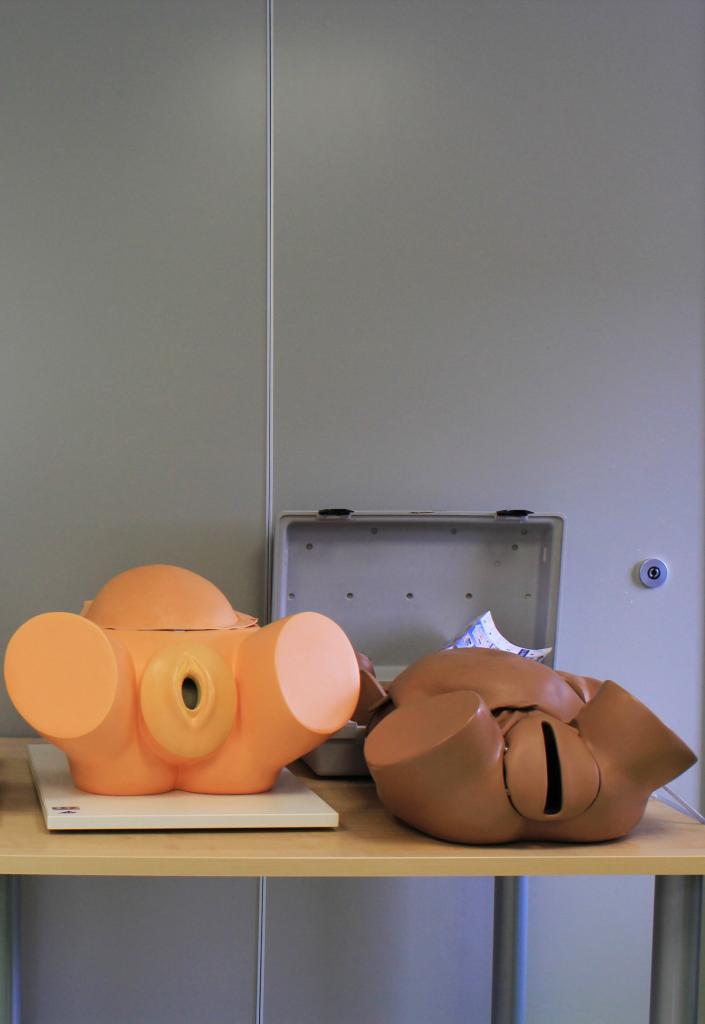
- Training system for gynaecological examination
- Vaginal examination models – norm and pathologies
- Examination of external genitals
- Examination of internal genitals by palpation and using s speculum
- Rectal examination
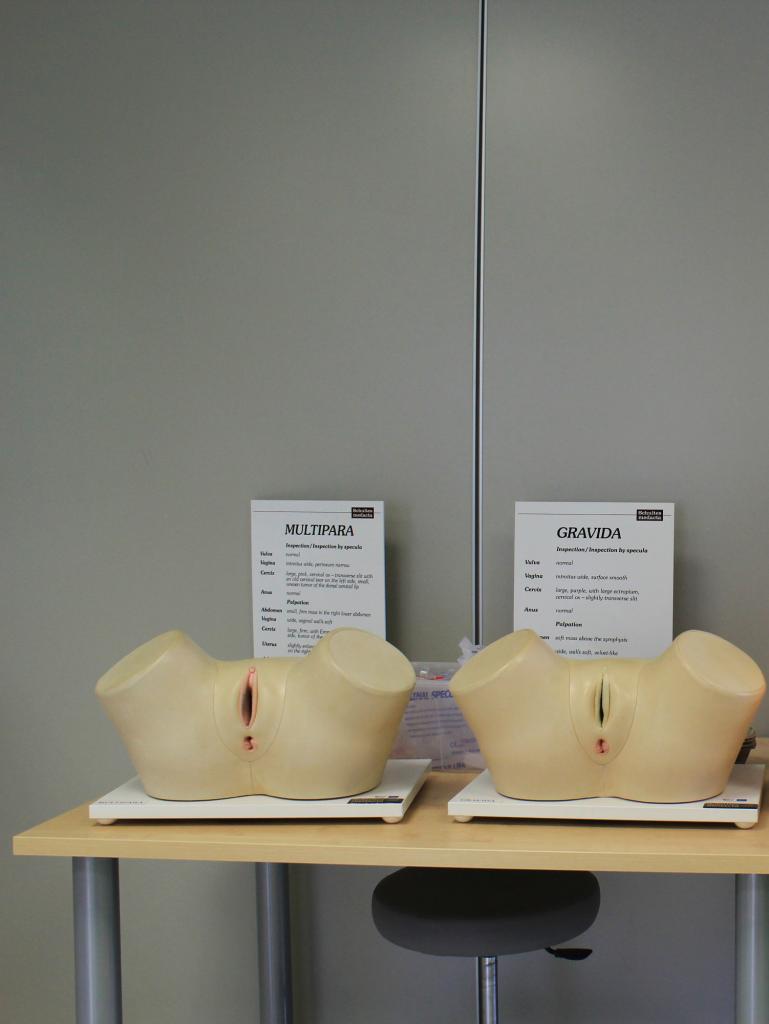
- Training system for breast examination
- Anatomically accurately created model that can be used as the training system for patient’s breast examination and self-examination
- Palpation of lymph nodes is possible
- Possibilities to demonstrate different pathologies (carcinoma, fibrocystic disease, fibroadenoma)
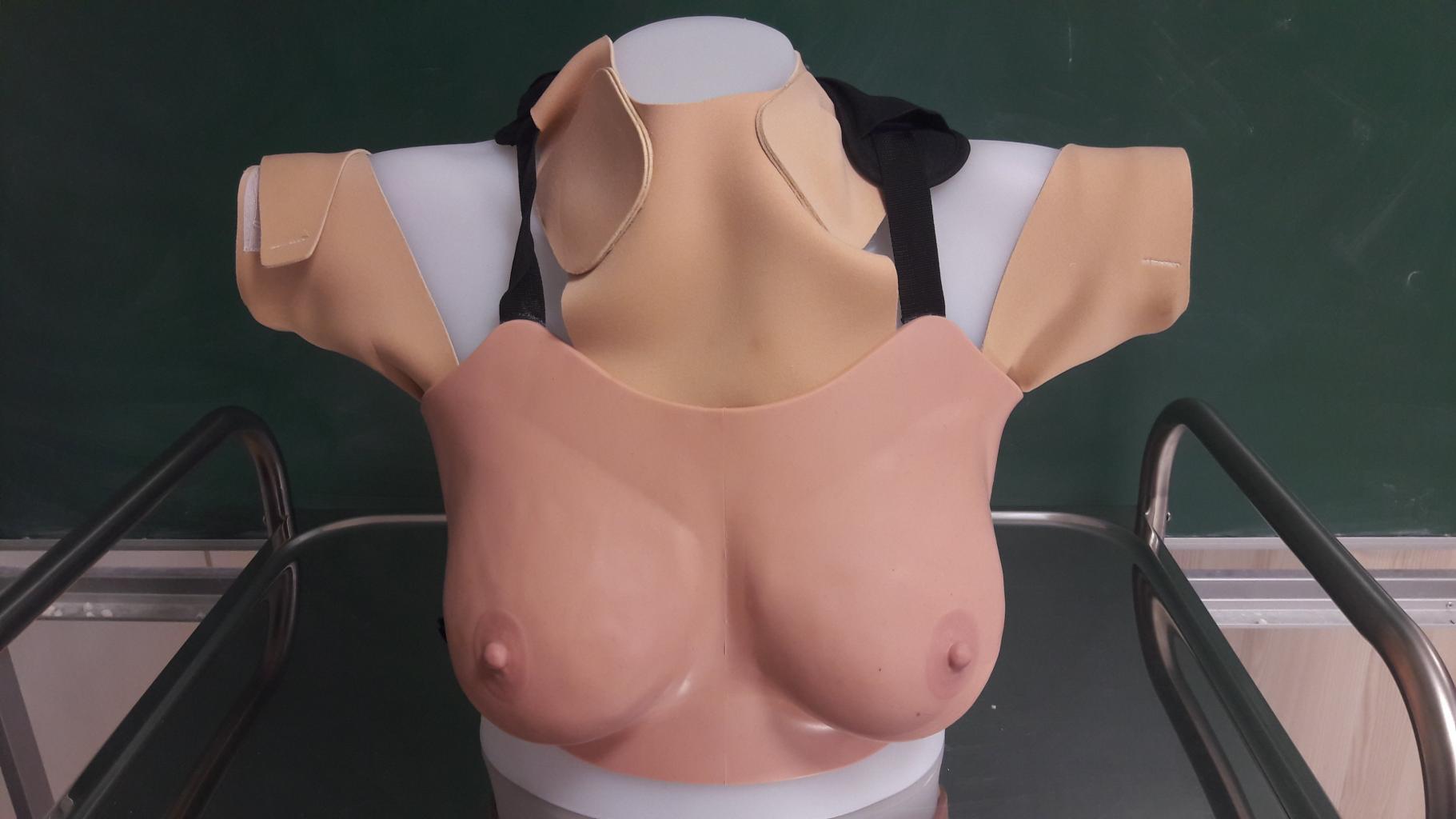
- Training system for rectal examination
- Digital prostate examination (norm and pathologies)
- Digital rectal examination (norm and pathologies)
- The training system supports the possibility to use a proctoscope
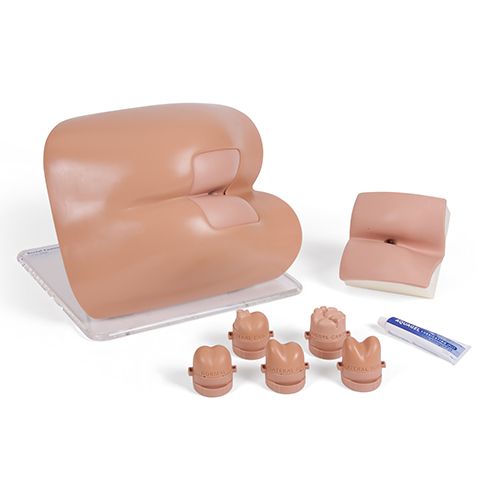
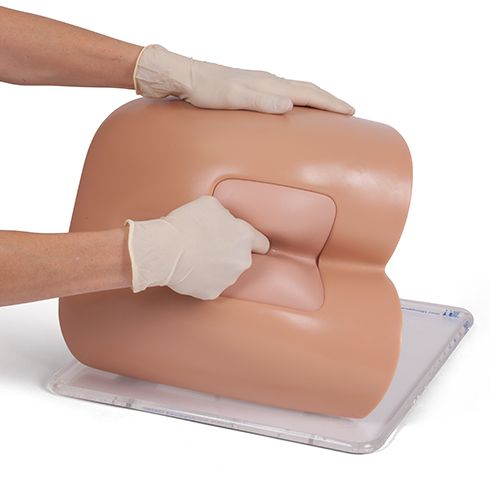
- Training system for pleural puncture and drainage
A dummy for diagnostics and treatment of chest injuries, tension pneumothorax, hydrothorax.
- Care dummy
Practising patient care:
drug administration in the eyes, ears, nose, and oral cavity
oral cavity and dental care procedures
oropharyngeal and nasopharyngeal tube insertion, secretion aspiration
endotracheal tube insertion, stabilisation and care
oxygen supply procedures
nasogastric probe insertion, care, drug administration and probe removal
gastric lavage and feeding
CVC approaches (demonstration)
pulse detection (manually created)
stoma care
enema simulations
urinary bladder catheterisation simulations
- Training system for nasogastral probe insertion
- NG probe insertion and stabilisation
- Possible stomach content aspiration
- Demonstration of NG probe course by manually stimulating the swallowing reflex
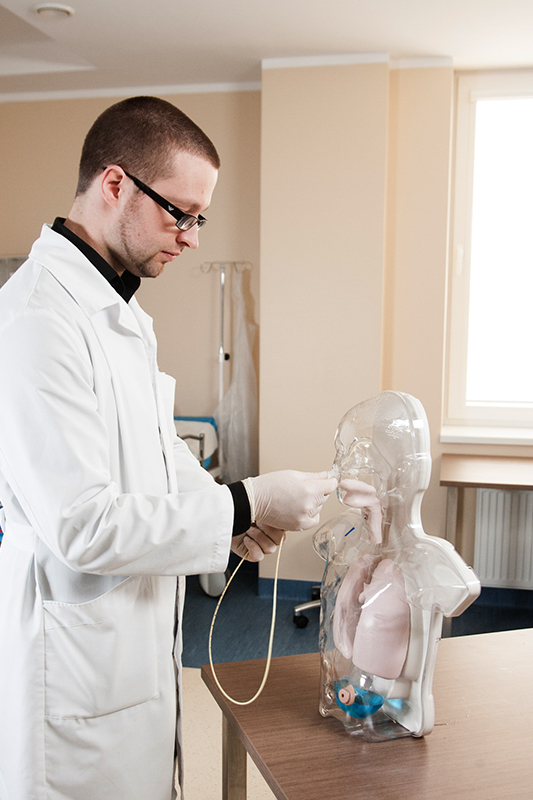
- Training system for lumbar puncture
Anatomically accurate lumbar spine
Possibilities to practice lumbar puncture
Possibility to collect fluid
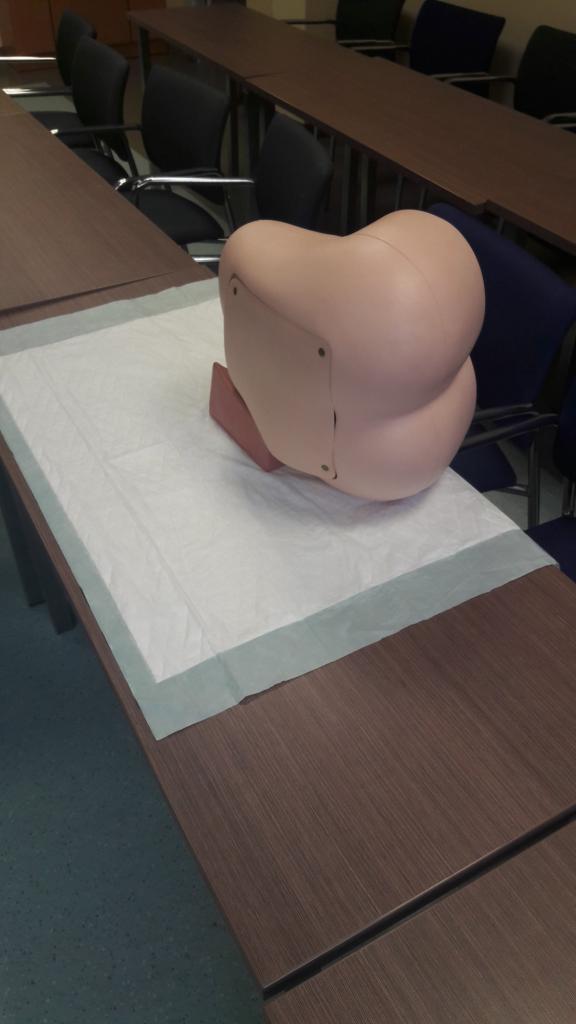
- Training system for otoscopy
Training system for otoscopy with demonstration of a normal case, diagnostics and demonstration of 8 different pathologies.
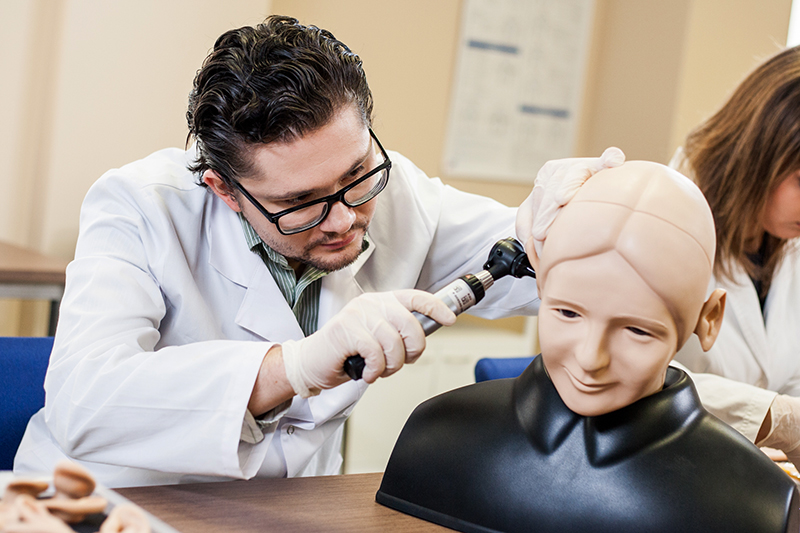
- Training system for ophthalmoscopy
Training system for ophthalmoscopy aimed at diagnostics of eye diseases
Changeable pupil diameter
3-step measurement of eyeball length demonstrating the difference between hypermetropic, normal and myopic vision
The training system for ophthalmoscopy can demonstrate the normal finding and 9 cases for diagnostics of various pathologies
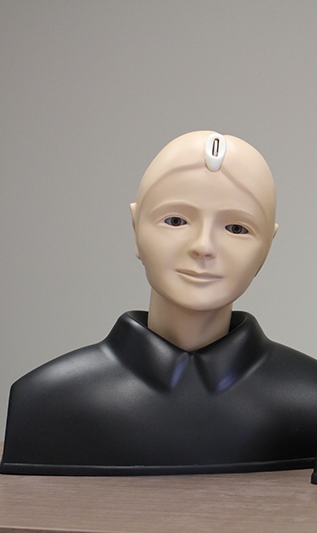
Training system for decubitus care
The dummy is designed for identification of wounds and injuries and treatment plan development.
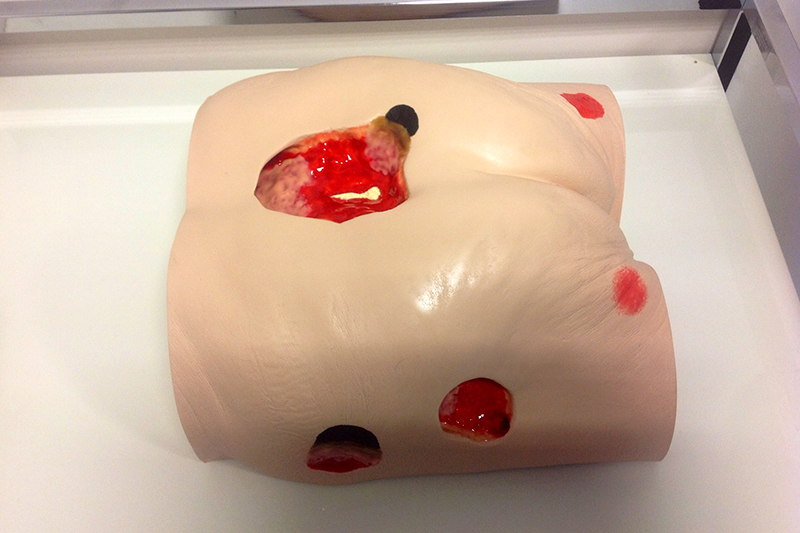
- Training system for enema
Accurately positioned dummy for different types of enemas.
- Training system for assisted respiration
- Practising oral and nasal intubation
- Laryngeal mask and Combitube insertion
- Demonstration of laryngospasm and Sellick's maneuver
- Ventilation using Ambu bag
- Abdominal bloating in case of improper ventilation
- Visual demonstration of lung bloating in case of proper ventilation
- Training system for inferior laryngotomy
- Dummy for tracheostomy and inferior laryngotomy
- Possibility to add a subcutaneous adipose layer for complicated tracheostomy and inferior laryngotomy
- Palpable anatomical landmarks of annular cartilage, laryngeal cartilage and tracheal rings
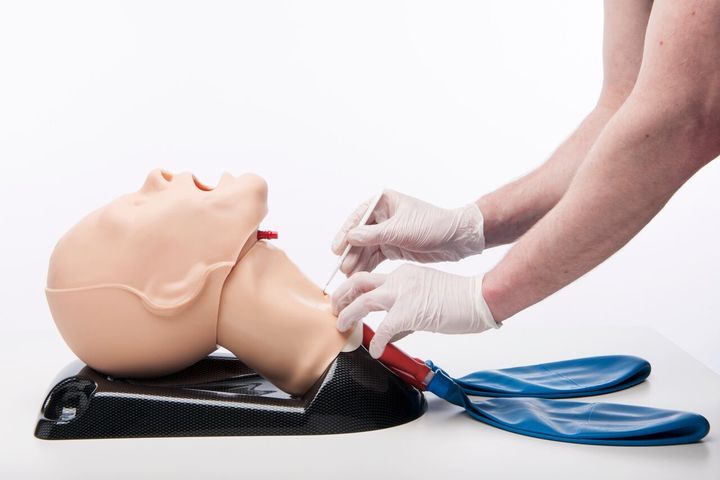
- Injury dummy
Injury dummy can be used for training of care for various injuries, both simulating first aid in EMS stage and during the secondary care period - wound treatment and desmurgy.
